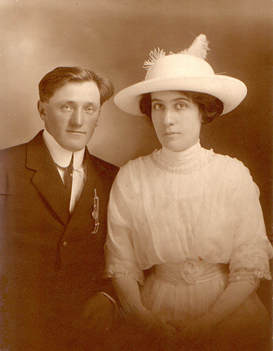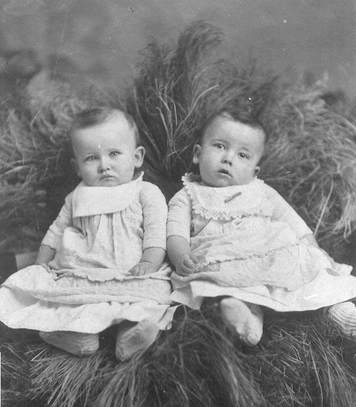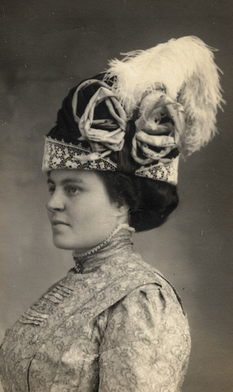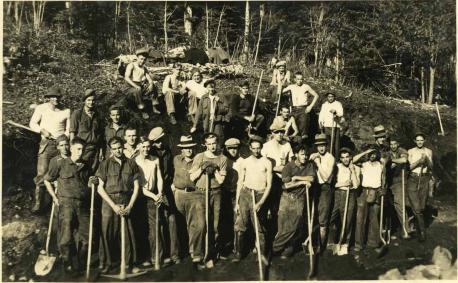|
Looking through old family photos, it was interesting to see how the landscape of our farm had changed. The big cottonwoods that line our north grove were relatively young saplings in the 1930s and 1940s. Our south grove expanded in the 1980s when there was an opportunity to have baby trees planted as part of a conservation effort in the county. A recent search online brought up the Civilian Conservation Corps. Was your ancestor part of that organization? Or did they use them to enhance their homestead and provide protection from erosion in the farm fields? Let’s look at what this was all about and see if there is any tie to family history. The Civilian Conservation Corps was part of President Roosevelt’s New Deal program in the 1930s. Its primary purpose was to provide employment with so many young and able-bodies men out of work during the Great Depression. It also served by helping to conserve land that was over logged or windblown from the dirty thirties.
According to the Digital Library site, The Civilian Conservation Corp was “Known as “Roosevelt’s Tree Army”, the program improved national and state parks, prevented erosion, controlled flooding and assisted in natural disaster recovery.” You can learn more about this effort by exploring the DPLA Civil Conservation Corps exhibition online. Citation Information Neatrour, Anna. Roosevelt’s Tree Army: Civilian Conservation Corps. Digital Public Library of America. September 2015. https://dp.la/exhibitions/civilian-conservation-corps. If you think that your ancestor worked for the Civil Conservation Corps, you can request information at the National Archives, St. Louis, Missouri: Requesting Civilian Conservation Corps Records This page details the process and links to information on the fees and forms to use when submitting a request. More information from National Archives on the WPA and CCC programs and process and prices. Theodore Roosevelt National Park - North Dakota and CCC There are family stories that an ancestor worked for the WPA (Work Progress Administration) to help build roads in the area near his home. He was a farmer, so I imagine that a team and a wagon were useful tools for hauling gravel and sand in those days. I have not sent for WPA records myself but here is a link to learn more about how you can send for them. Again, be aware that there is a fee. As you write your family story, think about how organizations like the WPA or CCC might have had an impact on their community or provided much needed income during the thirties. “I think that I shall never see a poem as lovely as a tree.” --Joyce Kilmer
1 Comment
3/12/2019 09:58:22 pm
It's interesting to see a 1930-1940's photo nowadays! Looks like it was very well kept
Reply
Leave a Reply. |
AuthorWith a lifelong passion for genealogy and history, the author enjoys the opportunity to share genealogy tidbits, inspiring others to research and write their family story. Archives
July 2024
Categories |




 RSS Feed
RSS Feed